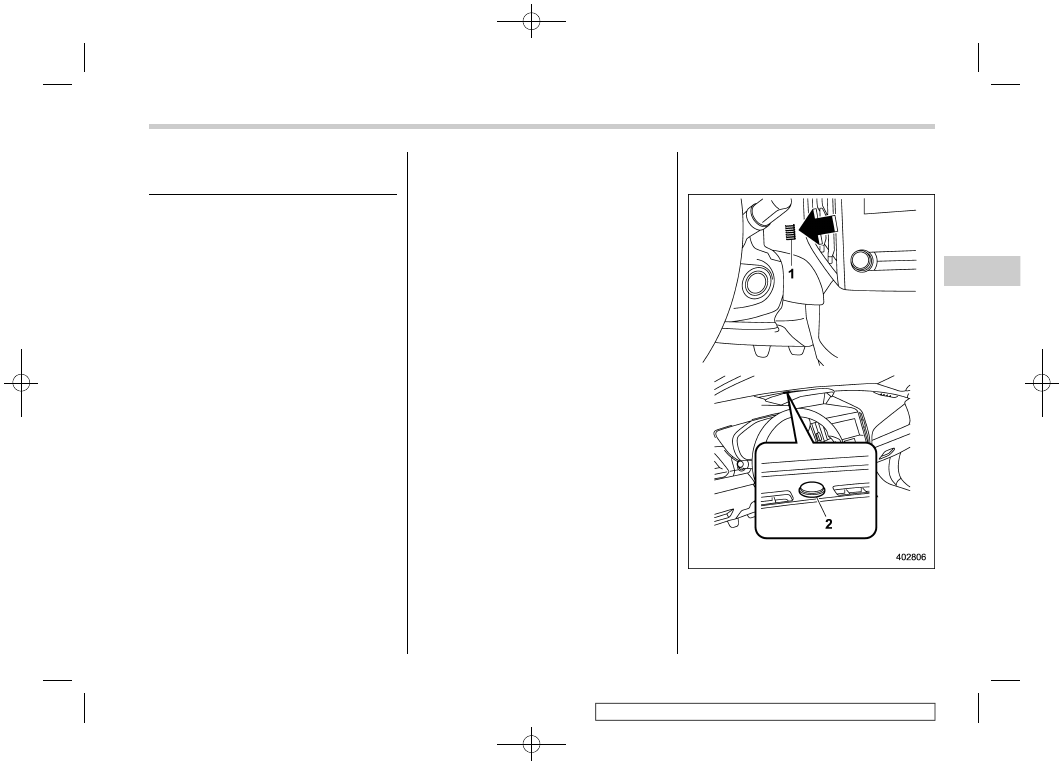Subaru Forester (2019). Manual - part 32

(263,1)
4-3. Automatic climate con-
trol operation
When this mode is selected, the fan speed,
airflow distribution, air-inlet control, and air
conditioner compressor operation are
automatically controlled. To activate this
mode, perform the following.
1. Press the AUTO button. The indicator
light “FULL AUTO” on the climate control
display illuminates.
2. Set the preferred temperature using
the temperature control dial.
NOTE
.
Operate the automatic climate con-
trol system when the engine is running.
.
Even when cooling is not necessary,
the air conditioner compressor will
automatically turn on if the temperature
is set much lower than the current
outlet air temperature. Even in this
case, the “A/C” indicator light on the
control panel illuminates.
.
The controllable temperature range
may vary depending on the regional
specifications of the vehicle.
.
If you operate any of the buttons on
the control panel other than the ON/
OFF button, rear window defogger
button, SYNC button and temperature
control dial(s) during FULL AUTO mode
operation, the “FULL” indicator light on
the multi-function display (color LCD)
will turn off and the “AUTO” indicator
light will remain illuminated. You can
then manually control the system as
desired using the button you operated.
To change the system back to the FULL
AUTO mode, press the AUTO button.
To turn off the climate control system,
press the ON/OFF button. Then the air
inlet selection will be set to the following.
.
When the air inlet selection is set to
auto mode: Outside air circulation
.
When the air inlet selection is set to
manual mode: No change
&
Sensors
The sensors are located as follows.
1)
Interior air temperature sensor
2)
Solar sensor
The automatic climate control system
employs several sensors. These sensors
– CONTINUED –
Automatic climate control operation
261
4
Climate
control